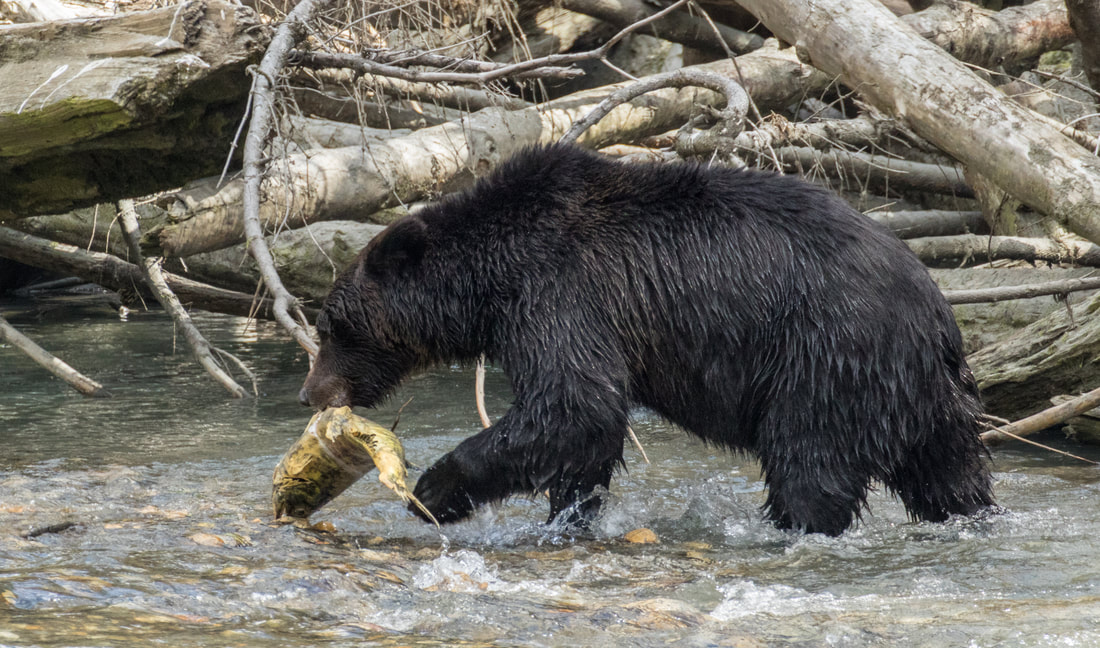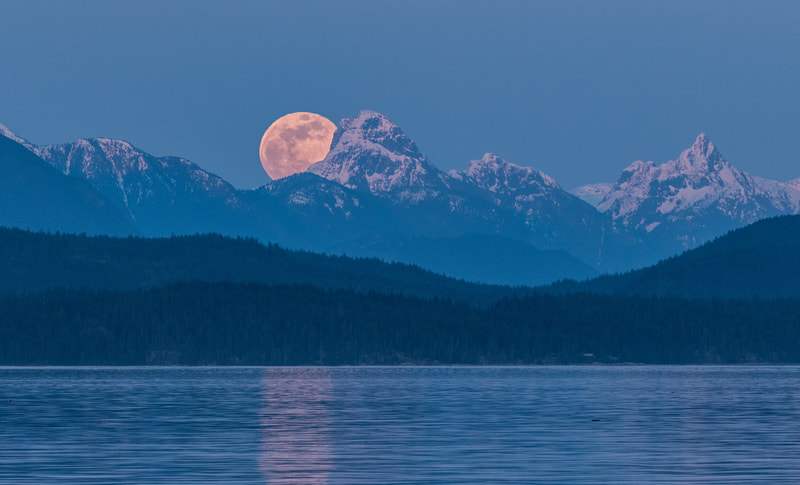|
Autumn is a season defined by change; everything is in flux as the sun slides towards the south and the temperatures slip downwards. In northerly latitudes animals adopt one of three general strategies for coping with the approach of winter; they migrate to warmer areas, enter a state of partial or complete hibernation, or remain active. Plants aren’t really great at migration, so they are left with two principle options; go dormant or continue to photosynthesize. But before we deck the halls and wax the skis, there are a wealth of autumnal events that are worth discussing. This week’s post will be a short introduction to some of these phenomena which I’ll cover in more detail in the coming weeks. Southward Migration: Birds and Butterflies I talked about avian spring migration back in March, and the feelings of excitement and anticipation wrapped up with the return of so many colorful birds. Bird migration in the fall is a little different; many of the birds have traded their bright breeding plumage for drabber tones and their boisterous songs for quiet chip notes or silence. But the absolute number of birds is generally much higher because the young that were produced during the breeding period join the adults on the southward journey. On average, 4.7 billion birds travel from the US into Mexico and beyond in the fall, whereas only 3.5 billion make the return journey in the spring. Much of that difference is a result of mortality that occurs during migration. Many species migrate across the Gulf of Mexico, embarking on a non-stop journey of up to 20 hours. This undertaking requires large energy reserves and favorable weather conditions. Not all individuals survive the crossing, however, and recent research has shown that at least one marine predator takes advantage of this unfortunate windfall. Gut content analyses of young tiger sharks in the gulf showed that 39% of sharks sampled had neotropical migrants in their bellies. Researchers speculate that these birds may provide a critical food resource for baby tiger sharks that are not yet skilled at catching live prey. Most birds crossing the gulf avoid becoming shark food, but that’s not the only peril that these birds face; migrating raptors are looking to catch a snack on the wing. One of the great natural wonders is the fall migration of raptors in North and Central America. Places such as Hawk Mountain Sanctuary in Pennsylvania, or Cape May in New Jersey provide opportunities to see hundreds or even thousands of these birds passing by on crisp September days with a brisk northerly wind. The real mecca for viewing this migration, however, is in sections of Mexico and Central America where the birds are funneled over narrow swathes of land. At these locales, single day tallies can exceed 1 million birds in what is known as the River of Raptors. I visited a hawk-watching platform in Veracruz, Mexico in 2006 and watched as raptors passed overhead in fantastic numbers. The flow of birds southward happened in many layers; from the small hawks and falcons zipping past at tree-top level to the larger hawks and eagles streaming past at 10,000 feet, too small to see with the naked eye. In the few hours I was there, some 7,000-10,000+ birds crossed through the airspace over us en-route to their wintering destinations. No less impressive is the migration of monarch butterflies from the eastern US to the mountains of southern Mexico; a journey of 2,500 miles for some populations. During the spring migration, monarchs exhibit a generational pattern of migration. That is, one generation travels from Mexico to the southern US, at which point they eat, mate, lay eggs, and die. These eggs hatch into caterpillars, the caterpillars pupate into butterflies, and the butterflies head north a few hundred miles before they eat, mate, lay eggs, and die. Individuals that migrating southward from the northern US and southern Canada in September and October may be three or four generations removed from the individuals that left that area the preceding fall. These great-great-grandchildren-flies tap into a genetical flight program that guides them to the same region, and possibly even the same stand of trees, their relatives wintered in the previous year. The Rut: Battle for Dominance I briefly mentioned the moose rut a few weeks prior, but elk, white-tailed deer, mule deer, bison, mountain goats and bighorn sheep are other species here in Colorado that participate in the breeding spectacle referred to as “the rut.” Essentially, males compete with one another to establish dominance, and high-ranking males acquire harems of females. Much of the male social hierarchy can be determined through visual and chemical cues, but when two evenly matched foes face one another, peaceful negotiations give way to violent confrontations. Sheep, bison, and goats bash their horns together, while moose, deer and elk clash antlers and engage in the equivalent of sumo-wrestling matches; whichever male succeeds in pushing the other around usually emerges the victor. Victorious males get the ultimate prize: the opportunity to pass their genes on to the next generation. Food Stores: Caches and Winter Weight Winter is a time of reduced food availability for many animals, but fall provides a rich bounty of dietary options: fruits, nuts and seeds are produced in abundance, and insects and other invertebrates are still active. Small mammals like pikas and squirrels spend the fall collecting and storing foods that they will use during the winter. American pikas are stocky relatives of rabbits and hares and are often found at high elevations, living on talus slopes and other rocky habitats. They spend the fall in a frenzy of food collecting activity as they prepare for winter. Pikas gather grasses, flowers, and forbs, dry them in the sun to prevent rot, and then stash them in their den for leisurely dining once the snows arrive. Squirrels, in contrast, bury nuts, seeds and pinecones in the ground as a way to store them for later consumption. This behavior is called “caching” and it requires some sophisticated memory, and a good sense of smell, on the part of the squirrels. More impressive than the squirrel’s memory is that of the Clarke’s nutcracker. These raucous birds cache tens of thousands of seeds in the fall and return to eat them over the course of the winter. The memories of squirrels and nutcrackers are not infallible, however, and many seeds are forgotten. These seeds may then germinate and become part of the next generation of trees. Cachers like the squirrels and nutcrackers are thus thought to play important roles in natural forest regeneration. A much easier strategy that requires no memory is that of storing food reserves on your body. These reserves exist as something called adipose tissue or “fat” and many people are familiar with the physiological tendency for our bodies to generate some of these fat stores in preparation for winter. But humans are supreme underachievers in this category compared to some other animals like bears. During the autumn fattening period, bears can consume 20,000 calories a day and put on 30+ pounds of fat per week. Bears need to bulk up because they can burn 4000 calories a day during their hibernation, which may last 100 days or more. Bears eat just about anything they can find during the fall; those in areas with rich fish or other marine resources feast on salmon and seafood, while those in interior locations search for fruits, berries, nuts, insects and tubers. Sounds like a good way to spend the fall if you ask me. Side Note: I have six photos on display in the Nederland Community Center Art Exhibition, which opens this Thursday! I’m thrilled to be showing these images in my community, and hope this is the first of many such shows. If you’re in the Boulder or Nederland area, come on out to the Nederland Community Center this Thursday, October 3rd, from 5-7pm. Next week: Fall Migration
Subscribe to the Newsletter: If you would like to get notifications about when new posts are up and other tidbits related to the blog, sign up for the View Out the Door weekly newsletter. Just email viewoutthedoor “at” gmail “dot” com with the subject header SUBSCRIBE.
0 Comments
Leave a Reply. |
About the author:Loren grew up in the wilds of Boston, Massachusetts, and honed his natural history skills in the urban backyard. He attended Cornell University for his undergraduate degree in Natural Resources, and received his PhD in Ecology from the University of California, Santa Barbara. He has traveled extensively, and in the past few years has developed an affliction for wildlife photography. Archives:
|

















